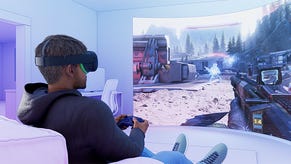Xbox to beat PC
People may knock the Xbox's PC-like specifications, but we have the inside track, and Microsoft might just be onto something
More details are emerging concerning the technical specifications of Microsoft's new Xbox console. You could be forgiven for thinking that the Xbox was something of a rebadged PC with a Pentium III CPU and a graphics part from legendary PC graphics component manufacturer nVidia. However further details have come to light, indicating that the Xbox, due at the end of the year in the US, will significantly outperform PCs for some time to come. The key revelation is that the next-gen console will use a Unified Memory Architecture (UMA) where the graphics subsystem and CPU share the same 64MB of fast 200MHz memory. In the PC architecture, the CPU and graphics card communicate via the comparatively slow AGP bus which is why PC graphics cards have their own local memory to speed things along (and make them even more expensive). Not content with the performance gains from CPU/graphics shared memory, the third subsection of the Xbox architecture has also received a boost. AMD's recently announced Lightning Data Transport will provide an ultra fast bus alternative between the CPU and nVidia's Media Communications Processor (MCPX). That's the part that integrates next-generation sound capabilities (64 Dolby Digital channels) with the I/O functions such as hard drive interface and broadband connection. AMD's Lightning Data Transport is rated at up to 1.6GB/s. That's fast, very fast. What does this mean? In practical terms, on the graphics side alone it's claimed that the XGPU (the NV20 graphics part) combined with the 733MHz Pentium III is capable of animating 125 million polygons per second. By contrast on the PC, nVidia's current best is the GeForce 2 Ultra that can only manage 31 million polygons a second. That said, by the time the Xbox is available, you could plug Xbox equal parts (NV20 graphics cards) and even Xbox beating parts (1GHz+ CPUs) into the PC but it will still be held back due to the slow legacy bus system. Interestingly the same aspect of the Playstation 2's architecture is considered the weakest part of the design. The comparatively slow bus speed again holds back performance of Sony's proprietary Emotion Engine graphics counterpart. Perhaps Microsoft has been learning from Sony's mistakes. Related Feature - HyperTransport of the future!








